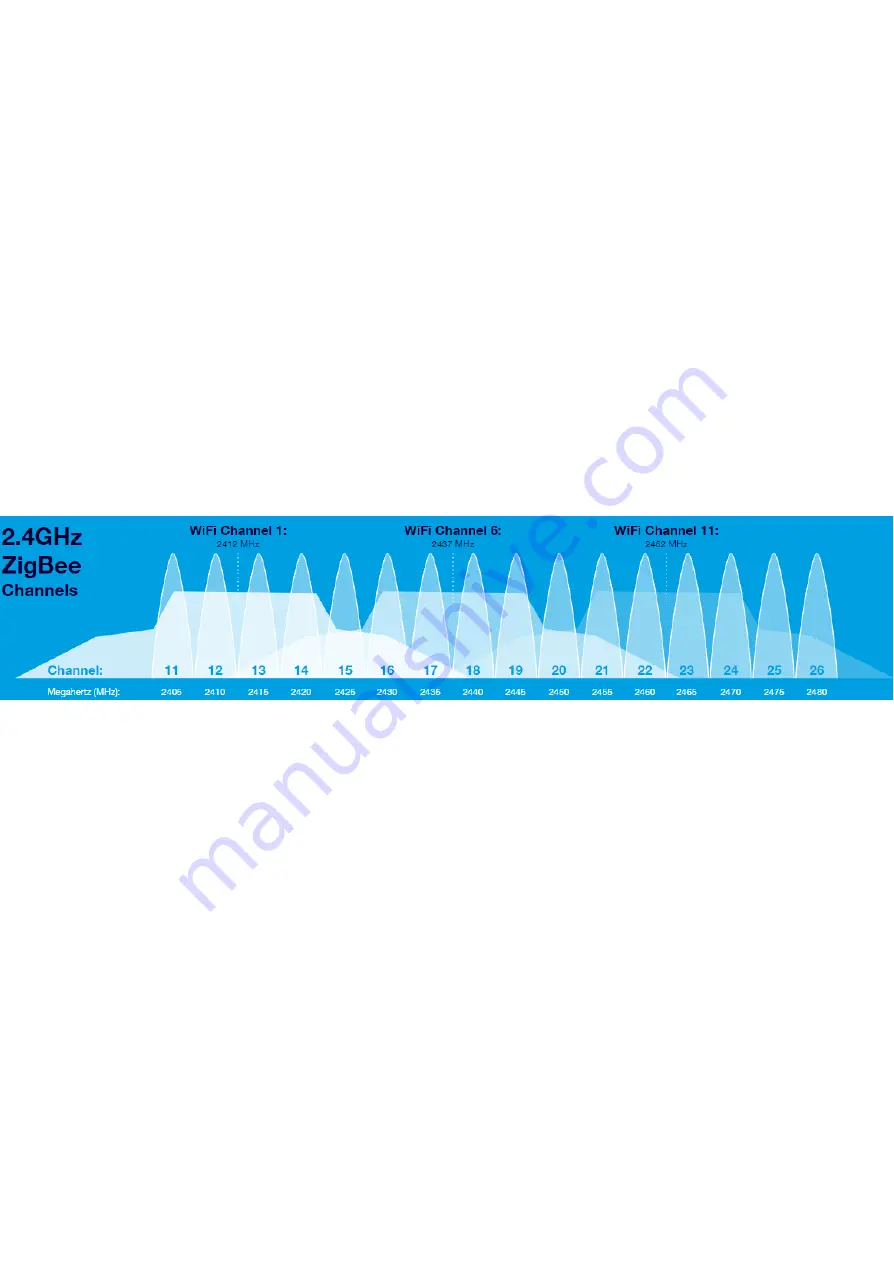
21
WiFi Channels
2.4GHz congestion occurs when networks are densely packed into a small area.
A good example of this would be a hotel or bar, where you will find numerous WiFi networks all
transmitting on different channels.
As shown below, this doesn't leave a lot of room for Zigbee signals to proliferate.
By managing the active WiFi channels within range, we can reduce the impact of this and improve
performance.
Manually set the WiFi channel of your router to one that does not overlap with your AOne Hub’s
Zigbee channel.
Top Tip for Success:
Check which channel your AOne™ Hub
is on by opening the pairing screen for
a Kinetic Switch; in Step 4:
ONE CLICK
Channel 11
FOUR CLICKS
Channel 14
NINE CLICKS
Channel 19
and so on…
Hub Ports
During initial setup, the AOne™ Hub needs a secure encrypted connection to any Device attempting to
connect via the internet. This is in order to download unique information about the Device, created by
the AOne™ app. This security prevents any other Device from connecting to the Hub.
To do this, the Hub uses specific ports not normally used for other network traffic:
UDP Ports 5560 - 5566
UDP ports 5562, 5565 and 5566 are used initially to establish a secure connection.
TCP Port 5568
If UDP ports are not available, the slower and less secure TCP port will be used.
TCP/UDP Port 8883
This is required for the MQTT Service (a communication technology used by the System) to work
correctly.
If neither are available on the network and cannot be made available by the system administrator,
consider using a 4G router.
Note: The vast majority of domestic connections should not be affected, as this is primarily an issue
for commercial or managed networks.






























